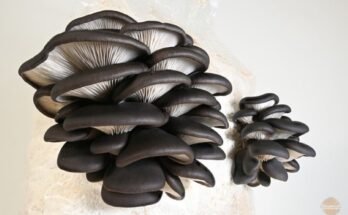Edible mushrooms are gaining huge popularity due to their high nutritional value. Whenever a person hears the word “mushroom” the first type of mushroom that comes to his/her mind is “oyster mushroom”. Oyster mushroom is one of the most famous edible mushrooms and the most widely consumed mushroom in the world. It gets its name from the oyster-shaped cap and short stem. It is easily available in the market or grocery stores.
These mushrooms can be found throughout the year however, the main season for growing is March to May when the temperature is quite favorable for their development. Oyster mushrooms are one of the easiest mushrooms to grow at home.
Oyster mushrooms are very easy to identify. The article is intended to give you a complete guide about the different types of oyster mushrooms, how to identify them, and which are the nice tasting oyster mushrooms. Once you are done reading this article you will be able to answer most of the questions related to oyster mushrooms.
Types of oyster mushrooms
There are different types of wild and cultivated oyster mushrooms that come in different colors. Wild types include pearl oyster, phoenix oyster and king oyster, while the cultivated types include blue, golden, and pink oyster mushrooms.
Pearl Oyster (Pleurotus ostreatus)
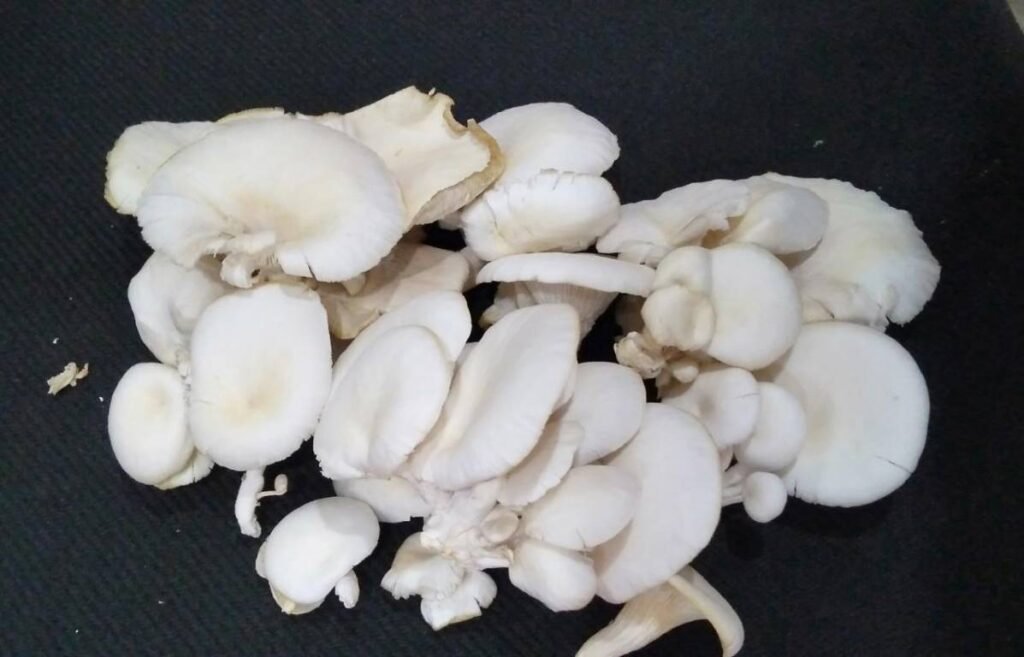
Pearl oysters is the poster child of oyster mushroom family and the most common type of oyster mushroom. It is given the name due to its resemblance to a pearl. It was first time cultivated in Germany during World War 1 and now it is grown commercially around the world for food. Pearl oyster mushroom is the most consumed mushroom in North America. Oyster mushrooms have a slightly sweet, woodsy, but milder and tender flavor than a shiitake mushroom. Adding oyster mushrooms to your vegetable and egg dishes will give make them taste amazing.
Golden Oyster (Pleurotus citrinopileatus)
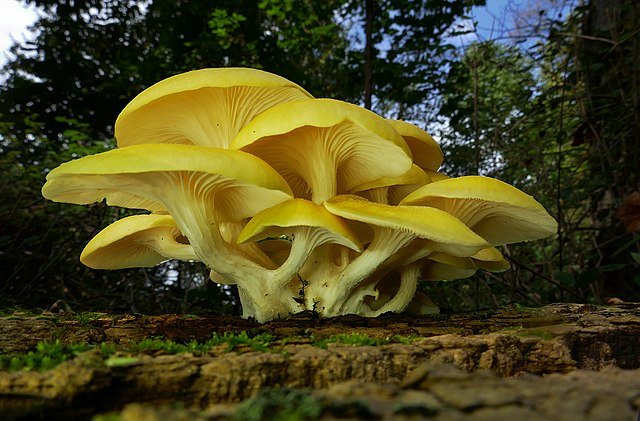
The name says it right, golden oyster mushrooms have a bright yellow golden color. It has a beautiful bright golden yellow cap with thin delicate flesh. It is a very delicate and eye-catching type of oyster mushroom. Golden oyster mushrooms are cultivated in China and are most commonly found in northern regions of Asia. Luckily, golden oyster mushroom is easy to grow at home and it does not need a lot of oxygen to survive, and it will grow well on different substrates.
Golden oyster mushroom does not have a standout flavor and take the taste of spices added to it. However, they have a very nice and distinct taste compared to other mushrooms of the oyster family. These mushrooms are more complex and aromatic in flavor than pearl oyster mushrooms. Golden mushrooms can be eaten braised or in soups.
Blue Oyster (Pleurotus columbinus)
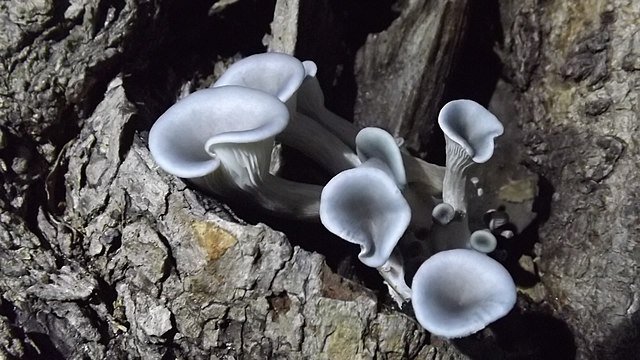
Blue oyster mushroom gets its name because initially produce blue caps. As they grow and become mature the blue color turns grey. The cap is dark while the gills are pale in color. It is a high yielding type of oyster mushroom. The distinct contrast between the gills and caps gives blue oyster mushroom a beautiful appearance.
Blue oyster mushrooms are mostly added in soups and do not lose their shape. They are widely used in Asian cuisines.
An interesting thing about blue oyster mushrooms is that they are often used as a supplement to meat due to their chewy texture. Blue oyster mushroom and pearl oyster mushroom have a very similar taste and they cannot be easily distinguished based on their taste.
Pink Oyster (Pleurotus djamor)
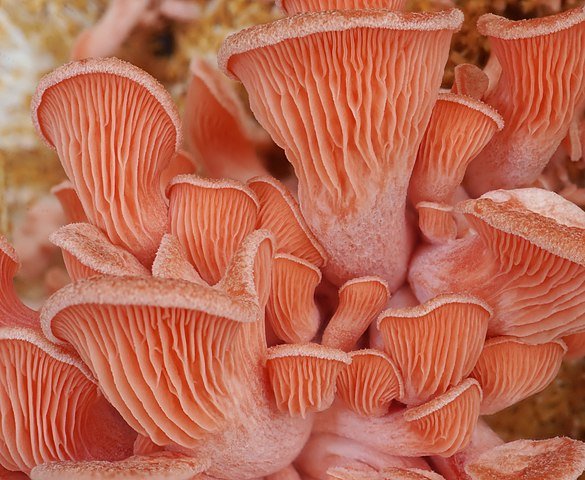
Pink oyster mushroom has a vibrant pink color with a ruffled look. It is also named as the flamingo oyster due to its appearance resembling with flamenco dance. It is native to the tropics and likes to grow at warmer temperatures. It is a delicate mushroom and can be often seen in the markets during warmer months. The bright pink color of this mushroom fades away when its cooked. It tastes similar like other mushrooms of the oyster family. Pink oyster mushrooms have a strong woody smell. If we talk about its culinary value pink oyster mushroom is often used as a substitute of seafood.
Phoenix oyster (Pleurotus pulmonarius)
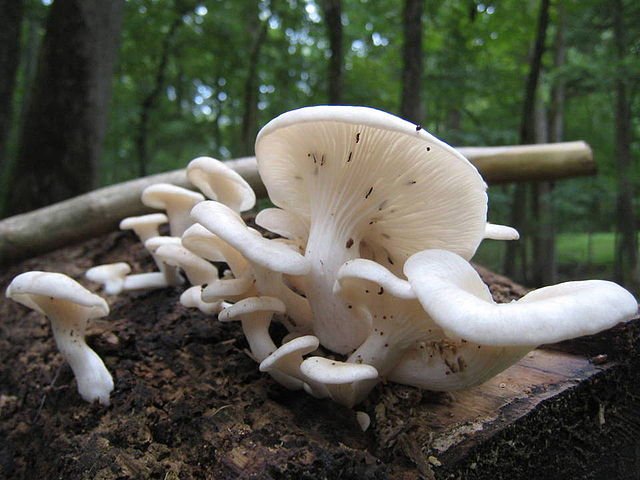
Phoenix oyster mushroom looks similar to pearl oyster mushroom. The only difference is that phoenix oyster mushrooms have smaller and paler caps. Phoenix oyster has a larger stem and thicker flesh than pearl oyster mushroom. It tastes pretty much similar like pearl oyster mushroom. It can be used in any type of dish, but it tastes best with garlic and butter.
King oyster (Pleurotus eryngii)
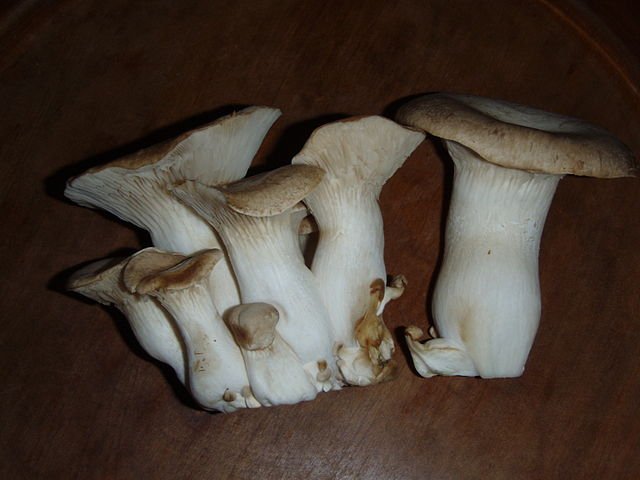
King oyster mushroom is given the name due to its large size compared to other mushrooms of the oyster family. It looks very different than other types of oyster mushrooms. King oyster mushrooms grows individually instead of growing in clusters and develops thicker and fleshy white stems. The thicker stems have more culinary value. The caps are tan colored. It is also called king trumpet oyster mushroom because it has crunchy and soft texture when cooked. It has a mild flavor and is often used as seafood alternate in vegan recipes. These mushrooms can be added to a variety of Asian meals, noodles, and pasta.
Note: Remember not all oyster mushrooms are edible there are some poisonous look alike oyster mushrooms. You must know how to identify poisonous oyster mushrooms.
Look alike of oyster mushrooms
Elm oyster mushroom
Elm oyster mushroom is considered as a look-alike of oyster mushroom; however, it is not an oyster mushroom. It can be easily confused with true oyster mushrooms. To tell the difference between elm oyster mushroom and the true oyster mushrooms look at the gills closely. If the gills do not run down the stem just like in oyster mushrooms it is not a true oyster. The gills of elm oyster stop suddenly near the base of the stem.
Elm oyster mushrooms are edible mushrooms. As far as taste is concerned most of the consumers think that they do not taste as good as the real oyster mushrooms.
Jack-O-Lantern (Omphalotus Olearius)
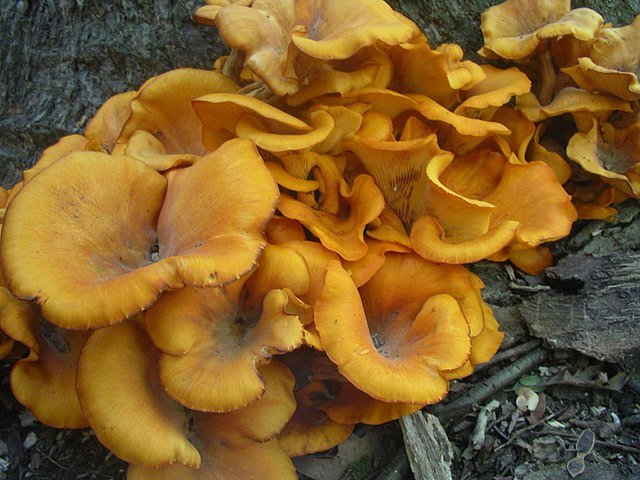
Jack-O-Lantern is a bright orange colored mushroom and oyster mushrooms do not have orange color. It can be confused with oyster mushroom because it looks quite similar. The bright orange color is the easiest way to distinguish it from true oyster mushrooms. It also bears gill that run down the stem just like oyster mushroom.
Jack-O-Lantern is a poisonous mushroom however, it is not fatal. If you eat this mushroom accidentally you will experience the symptoms of diarrhea, cramps, stomach upset, and severe vomiting.
Ghost fungus (Omphalotus nidiformis)
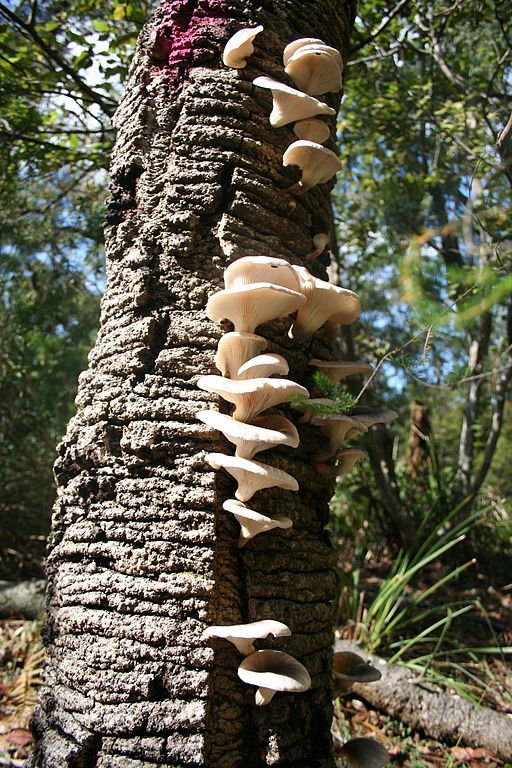
Ghost fungus is a poisonous mushroom. It can cause severe cramps, stomach upset, and vomiting. It resembles oyster mushrooms because its gills extend all the way down the stem. An interesting feature of this mushroom is that it has bioluminescent properties, and it typically glows in the dark. Therefore, the mushroom is given the name ghost fungus. It is easy to tell the difference between ghost fungus and oyster mushrooms at night because in the day light it might be a little difficult to locate the gills.
This mushroom grows only in India, Japan, and Australia. If you do not live in any of these regions, then there is nothing for you to worry about.
I hope now you are more familiar with different types of oyster mushrooms, and you can tell the difference between true oyster mushrooms and the look alike. Try adding these flavorful mushrooms in your food dishes and enjoy their rich nutritional benefits.



